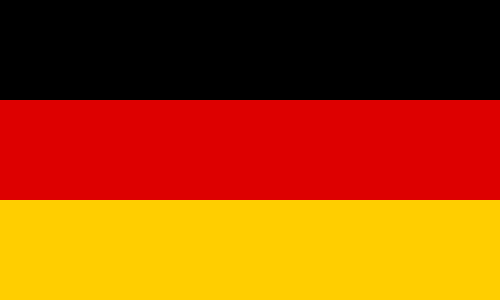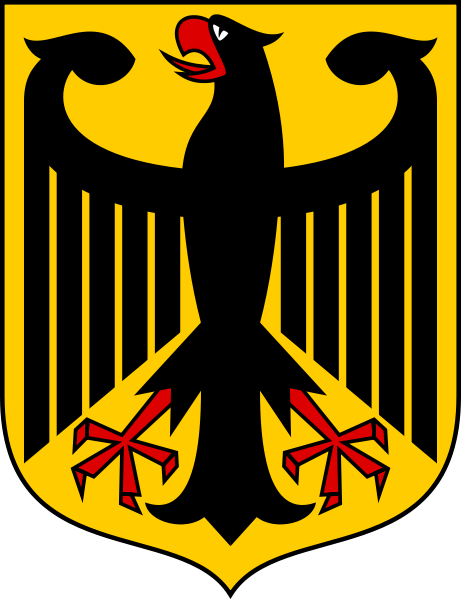
German — Chinese

 *Track and field athletics
4x100 m Woman
*Track and field athletics
4x100 m Woman
 *Track and field athletics
4x400 m Woman
*Track and field athletics
4x400 m Woman
 Germany
Germany

 European Union
History of the European Union
European Union
History of the European Union

 European Union
*Founding states
European Union
*Founding states

 Geography
Geography

 Geography
***IMF Developed countries
Geography
***IMF Developed countries
 IMF Developed countries
IMF Developed countries
 IMF Developed countries
TOP2
IMF Developed countries
TOP2
 Leichtathletik-Weltmeisterschaften
2001 Edmonton
Leichtathletik-Weltmeisterschaften
2001 Edmonton
 Leichtathletik-Weltmeisterschaften
1997 Athens
Leichtathletik-Weltmeisterschaften
1997 Athens

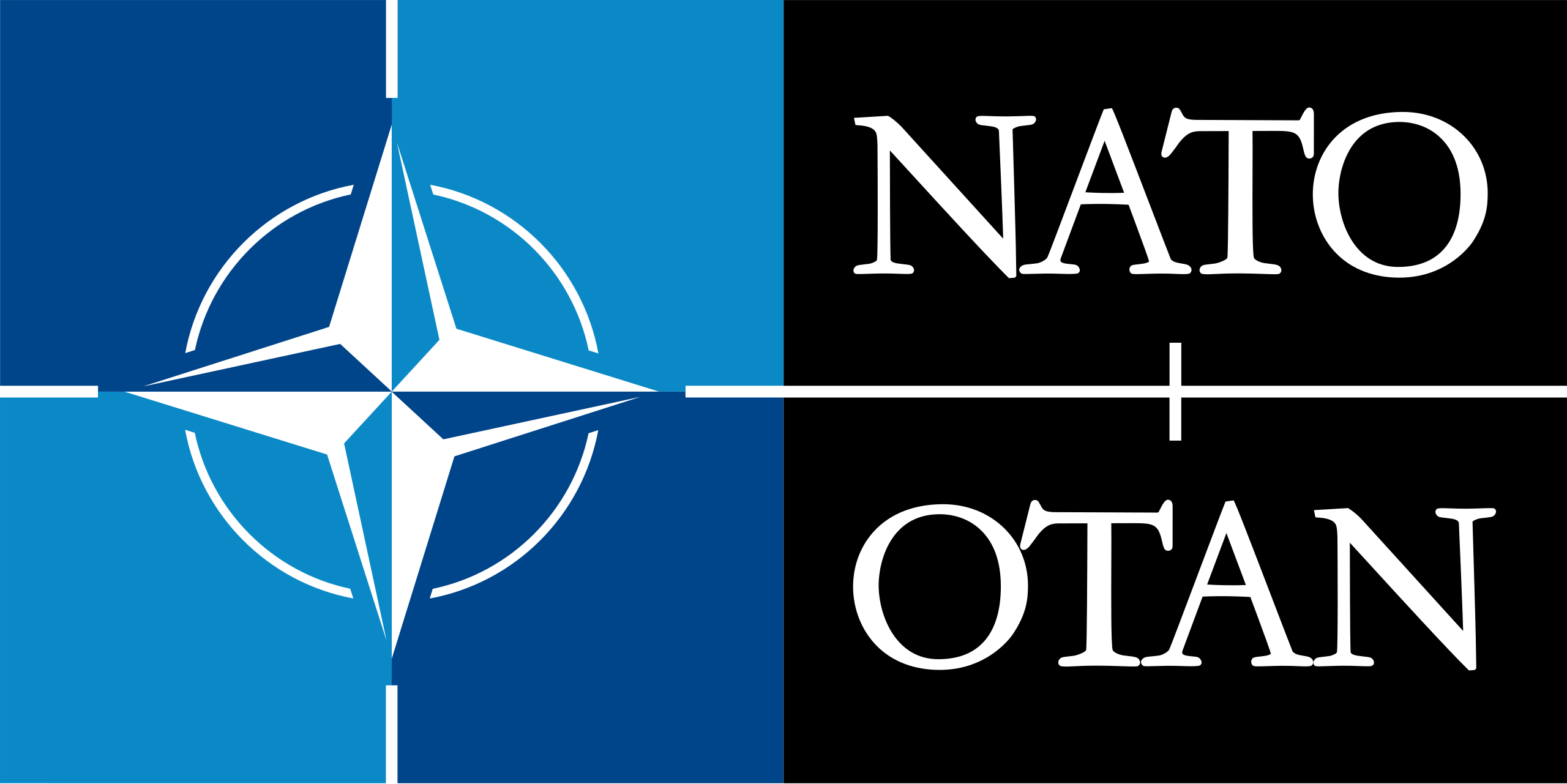 Mitglieder der NATO
Mitglieder der NATO

 Party and government
Group of the twenty most important industrial and emerging countries
Party and government
Group of the twenty most important industrial and emerging countries

 Party and government
Group of Seven,G7
Party and government
Group of Seven,G7

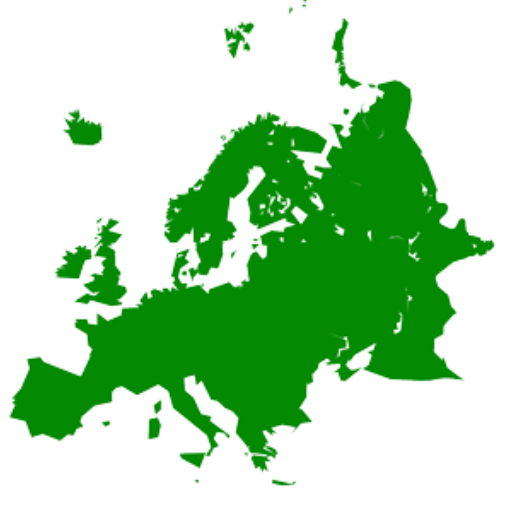 States of Europe
States of Europe
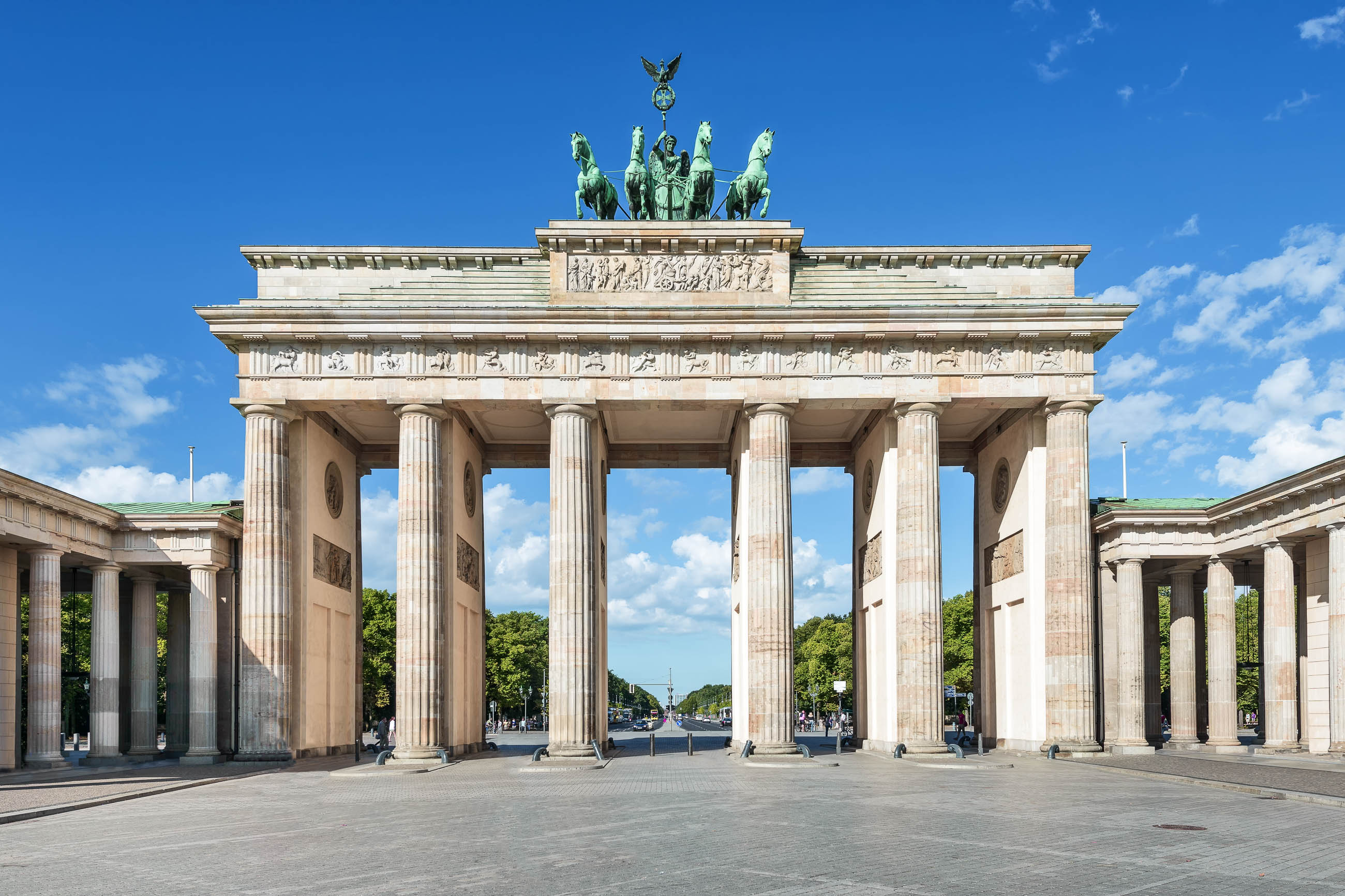
德意志联邦共和国(德语:Bundesrepublik Deutschland、![]() 发音(帮助·信息))简称德国(德语:Deutschland)[参 7],是一个位于欧洲的联邦议会共和制国家,国家元首为联邦总统,政府首脑为联邦总理。它由16个联邦州组成,首都与最大城市为柏林。其国土面积约35.7万平方公里,南北距离为876公里,东西相距640公里,从北部的北海与波罗的海延伸至南部的阿尔卑斯山[参 8]。气候温和,季节分明。德国人口约8,180万,为欧洲联盟中人口最多的国家,也是世界第二大移民目的地,仅次于美国[参 9]。
发音(帮助·信息))简称德国(德语:Deutschland)[参 7],是一个位于欧洲的联邦议会共和制国家,国家元首为联邦总统,政府首脑为联邦总理。它由16个联邦州组成,首都与最大城市为柏林。其国土面积约35.7万平方公里,南北距离为876公里,东西相距640公里,从北部的北海与波罗的海延伸至南部的阿尔卑斯山[参 8]。气候温和,季节分明。德国人口约8,180万,为欧洲联盟中人口最多的国家,也是世界第二大移民目的地,仅次于美国[参 9]。
在50万年前的旧石器时代晚期,海德堡人及其后代尼安德特人生活在今德国中部。自古典时代以来各日耳曼部族开始定居于今日德国的北部地区。公元1世纪时,有罗马人著作的关于“日耳曼尼亚”的历史记载。在公元4到7世纪的民族迁徙期,日耳曼部族逐渐向欧洲南部扩张。自公元10世纪起,德意志领土组成神圣罗马帝国的核心部分[参 10]。16世纪时,德意志北部地区成为宗教改革中心。1871年,在普鲁士主导之下,多数德意志邦国统一并加入德意志帝国。在第一次世界大战和1918-1919年德国革命后,德意志帝国解体,议会制的魏玛共和国取而代之。1933年国家社会主义党获取政权并建立独裁统治,最终导致第二次世界大战及系统性种族灭绝的发生。在战败并经历同盟国军事占领后,两个德国分别建立:德意志民主共和国和德意志联邦共和国。在1990年10月3日重新统一成为现在的德国。
德国是世界大国之一,其国内生产总值以国际汇率计居世界第四,以购买力平价计居世界第五。其诸多工业和科技部门位居世界前列,例如全球驰名的德国车厂、精密部件等,为世界第三大出口国。德国为发达国家,生活水平居世界前列。德国人也以热爱大自然闻名,都市绿化率极高,也是欧洲再生能源大国,是可持续发展经济的样板,除了强调环境保护与自然生态保育,在人为饲养活体的态度十分严谨,不但获得大量外汇和资讯优势,其动物保护法律管束、生命教育水准也是首屈一指的,在高等教育方面并提供免费大学教育[参 11],并具备完善的社会保障制度和医疗体系,催生出拜尔等大药厂。
德国为1993年欧洲联盟建立时的创始国之一,为申根区一部分,并于1999年推动欧元区的建立。德国亦为联合国、北大西洋公约组织、八国集团、20国集团及经济合作与发展组织成员。其军事开支总额居世界第九。
德语是欧盟境内使用人数最多的母语。德国文化的丰富层次和对世界的影响表现在其美术和建筑、音乐、哲学以及电影等等。德国的文化遗产主要以老城为代表。另外国家公园和自然公园共计有上百处。
(Vollform: Bundesrepublik Deutschland) ist ein föderal verfasster Staat in Mitteleuropa, der aus den 16 deutschen Ländern besteht. Die Bundesrepublik ist ein freiheitlich-demokratischer Rechtsstaat[8] und stellt die jüngste Ausprägung des deutschen Nationalstaates dar.[9] Mit rund 82,8 Millionen Einwohnern (31. Dezember 2016) zählt Deutschland zu den dicht besiedelten Flächenstaaten.
An Deutschland grenzen neun Staaten, im Norden die Gewässer der Nord- und Ostsee und im Süden das Bergland der Alpen. Es liegt in der gemäßigten Klimazone. Bundeshauptstadt sowie bevölkerungsreichste deutsche Stadt ist Berlin. Weitere bedeutende Metropolen sind Hamburg, München, Köln, Frankfurt, Stuttgart und Düsseldorf; größter Ballungsraum ist das Ruhrgebiet. Deutschland gilt international als das Land mit der zweithöchsten Zahl von Einwanderern nach den Vereinigten Staaten (Stand 2015).[10][11] Seine Bevölkerung ist die zweitälteste und hat mit 1,47 Kindern pro Frau (2014) eine der niedrigsten Geburtenraten der Welt.[12]
Auf dem Territorium des heutigen Deutschlands wurden frühe Siedlungsformen von vor etwa 500.000 Jahren nachgewiesen, wie Funde vom Heidelbergmenschen, vom Neandertaler sowie von einigen der ältesten Kunstwerke der Menschheit aus der Altsteinzeit belegen. Seit der Antike ist die lateinische Bezeichnung Germania für das Siedlungsgebiet der Germanen bekannt, seit dem 4. Jahrhundert ist die Verwendung des Begriffes deutsch in althochdeutscher Form belegt. Das seit dem 10. Jahrhundert bestehende Heilige Römische Reich bestand aus vielen Herrschaftsgebieten und war mit dem 1815 nachfolgenden Deutschen Bund der Ursprung des föderalen deutschen Staates. Dieser entstand erstmals mit der Gründung des Deutschen Reichs im Jahr 1871, woraus eine rasche Wirtschaftsentwicklung vom Agrar- zum Industrieland folgte.
Nach dem Ersten Weltkrieg kam es infolge der Novemberrevolution 1918 zur Bildung der demokratischen Weimarer Republik und zum Friedensvertrag von Versailles. Der nationalsozialistischen Diktatur von 1933 bis 1945 samt verheerendem Zweitem Weltkrieg folgte eine Zeit der Veränderung und Teilung des Staates. Der Gründung der Bundesrepublik als demokratischer westdeutscher Teilstaat mit Inkrafttreten des Grundgesetzes am 24. Mai 1949 folgte wiederum die Gründung der sozialistischen DDR am 7. Oktober 1949 als ostdeutscher Teilstaat.[13] Nach der friedlichen Revolution 1989 folgte die Wiedervereinigung beider Landesteile am 3. Oktober 1990; seitdem wird der Tag der Deutschen Einheit als nationaler Feiertag begangen.
Deutschland ist Gründungsmitglied des Europarates und der Europäischen Union sowie deren bevölkerungsreichstes Land. Mit 18 anderen EU-Mitgliedstaaten bildet es eine Währungsunion, die Eurozone. Es ist Mitglied der UN, der OECD, der OSZE, der NATO, der G7 und der G20. Die Bundesrepublik Deutschland gilt als einer der politisch einflussreichsten Staaten Europas und ist ein gesuchtes Partnerland auf globaler Ebene.[14]
Gemessen am Bruttoinlandsprodukt ist Deutschland die größte Volkswirtschaft Europas und die viertgrößte der Welt.[5] Im Jahr 2015 war es die drittgrößte Export- und Importnation.[15] Es ist marktwirtschaftlich geprägt. Aufgrund der Rohstoffarmut und der Automatisierung der Industrie entwickelt sich das Land, das stark von der Qualität seines Bildungssystems abhängt, zunehmend zur Informations- und Wissensgesellschaft.[16] Gemäß dem Index der menschlichen Entwicklung zählt Deutschland zu den sehr hoch entwickelten Ländern.[17]
Die deutsche Sprache ist die meistgesprochene Muttersprache und nach Englisch die zweithäufigste Fremdsprache in der Europäischen Union; die Zahl ihrer Sprecher rangiert weltweit auf dem zehnten Platz. Die Kultur Deutschlands hat vielschichtige und weltbekannte Ausdrucksformen hervorgebracht, etwa in der Kunst und Architektur, der Musik, der Philosophie, der Filmkultur, der Küche, der Traditionspflege, im Design, im Sport, in der Wissenschaft und der Wirtschaft. Das UNESCO-Welterbe in Deutschland sowie die Vielfalt der Kulturdenkmale und Altstädte ist umfangreich. Eine Vielzahl von National- und Naturparks sind im Land ausgewiesen.
ドイツ連邦共和国(ドイツれんぽうきょうわこく、独: Bundesrepublik Deutschland)、通称ドイツ(独: Deutschland)は、中央ヨーロッパ西部に位置する連邦共和制国家。首都および最大の都市はベルリン州。南がスイスとオーストリア、北にデンマーク、西をオランダとベルギーとルクセンブルク、東はポーランドとチェコとそれぞれ国境を接する。
欧州大陸における政治的・経済的な主要国であり、歴史上、多くの文化・科学・技術分野における重要な指導国でもある。人口は8300万人で、これは欧州連合において最大である。同国は限定的主権を有する16の州によって構成される。国土の総面積は35万7386平方キロメートルであり、主に温暖な気候に属する。かつて「西ドイツ」と呼ばれていた時代は「西欧」に分類されていたが、東ドイツ(ドイツ民主共和国)の民主化と東西ドイツの統一により「中欧」または「中西欧」に分類されるようになっている。
ドイツ経済の規模は、対米ドル名目為替レートによって計算される米ドル建て名目GDP(MERベースGDP)で世界第4位であり、対米ドル購買力平価によって計算される米ドル建て実質GDP(PPPベースGDP)で世界第5位である。技術及び産業分野における世界的なリーダーとして、世界第3位の輸出国かつ世界第3位の輸入国である。世界最古のユニバーサルヘルスケア制度を含む、包括的な社会保障を特色とする非常に高い生活水準が実現されている先進国である。豊かな政治及び文化の歴史で知られ、影響力ある多数の芸術家、音楽家、映画人、哲学者、科学者及び技術者、起業家の故国である。
1993年に欧州連合へ発展した1957年の欧州諸共同体の原加盟国であるほか、1995年以来シェンゲン圏の一員で、1999年以降はユーロ圏の一員でもある。また、国際連合、欧州評議会、NATO、G7、G20、OECDの主要なメンバーであり、欧州の大国「ビッグ4」や列強の一国に数えられる。アメリカ合衆国に次ぎ、ドイツは世界第2位の移住地である[1]。
Germany (German: Deutschland, pronounced [ˈdɔʏtʃlant] (![]() listen)), officially the Federal Republic of Germany,[e] is a country in Central Europe. It is the second-most populous country in Europe after Russia, and the most populous member state of the European Union. Germany is situated between the Baltic and North seas to the north, and the Alps to the south; it covers an area of 357,022 square kilometres (137,847 sq mi), with a population of over 83 million within its 16 constituent states. It borders Denmark to the north, Poland and the Czech Republic to the east, Austria and Switzerland to the south, and France, Luxembourg, Belgium, and the Netherlands to the west. The nation's capital and largest city is Berlin, and its financial centre is Frankfurt; the largest urban area is the Ruhr.
listen)), officially the Federal Republic of Germany,[e] is a country in Central Europe. It is the second-most populous country in Europe after Russia, and the most populous member state of the European Union. Germany is situated between the Baltic and North seas to the north, and the Alps to the south; it covers an area of 357,022 square kilometres (137,847 sq mi), with a population of over 83 million within its 16 constituent states. It borders Denmark to the north, Poland and the Czech Republic to the east, Austria and Switzerland to the south, and France, Luxembourg, Belgium, and the Netherlands to the west. The nation's capital and largest city is Berlin, and its financial centre is Frankfurt; the largest urban area is the Ruhr.
Various Germanic tribes have inhabited the northern parts of modern Germany since classical antiquity. A region named Germania was documented before AD 100. In the 10th century, German territories formed a central part of the Holy Roman Empire. During the 16th century, northern German regions became the centre of the Protestant Reformation. Following the Napoleonic Wars and the dissolution of the Holy Roman Empire in 1806, the German Confederation was formed in 1815. In 1871, Germany became a nation-state when most of the German states unified into the Prussian-dominated German Empire. After World War I and the German Revolution of 1918–1919, the Empire was replaced by the semi-presidential Weimar Republic. The Nazi seizure of power in 1933 led to the establishment of a dictatorship, World War II, and the Holocaust. After the end of World War II in Europe and a period of Allied occupation, Germany was divided into the Federal Republic of Germany, generally known as West Germany, and the German Democratic Republic, East Germany. The Federal Republic of Germany was a founding member of the European Economic Community and the European Union, while the German Democratic Republic was a communist Eastern Bloc state and member of the Warsaw Pact. After the fall of communism, German reunification saw the former East German states join the Federal Republic of Germany on 3 October 1990—becoming a federal parliamentary republic.
Germany is a great power with a strong economy; it has the largest economy in Europe, the world's fourth-largest economy by nominal GDP, and the fifth-largest by PPP. As a global leader in several industrial, scientific and technological sectors, it is both the world's third-largest exporter and importer of goods. As a developed country, which ranks very high on the Human Development Index, it offers social security and a universal health care system, environmental protections, and a tuition-free university education. Germany is a member of the United Nations, NATO, the G7, the G20, and the OECD. It has the third-greatest number of UNESCO World Heritage Sites.
L'Allemagne (/almaɲ/ ; en allemand : Deutschland /ˈdɔʏtʃlant/ Écouter), en forme longue la République fédérale d'Allemagneb, abrégée en RFA (en allemand : Bundesrepublik Deutschland /ˈbʊn.dəs.ʁe.puˌblik ˈdɔʏtʃ.lant/ Écouter, abrégée en BRD), est un État d'Europe centrale, et selon certaines définitions d'Europe de l'Ouest, entouré par la mer du Nord, le Danemark et la mer Baltique au nord, par la Pologne à l'est-nord-est, par la Tchéquie à l'est-sud-est, par l'Autriche au sud-sud-est, par la Suisse au sud-sud-ouest, par la France au sud-ouest, par la Belgique et le Luxembourg à l'ouest, enfin par les Pays-Bas à l'ouest-nord-ouest. Décentralisée et fédérale, l'Allemagne compte quatre métropoles de plus d'un million d'habitants : la capitale Berlin, ainsi que Hambourg, Munich et Cologne. Le siège du gouvernement est situé dans la ville de Berlin et dans la ville fédérale de Bonn. Francfort-sur-le-Main est considérée comme la capitale financière de l'Allemagnec : dans cette ville se trouve le siège de la Banque centrale européenne.
Beaucoup de peuples germaniques occupent le Nord du territoire actuel depuis l'Antiquité classique. Durant ce que l'on nomme les invasions barbares, les tribus germaniques se rapprochent du Sud de ce territoire. À partir du Xe siècle, les territoires forment la partie centrale du Saint-Empire romain germanique. Au XVIe siècle, le Nord de l'Allemagne est au cœur de la réforme protestante. Le pangermanisme entraîne l'unification des États allemands en 1871 pour former l'Empire allemand. Après la Première Guerre mondiale, et la révolution allemande de 1918-1919, l'Empire est remplacé par la république parlementaire de Weimar. L'accès au pouvoir des nazis en 1933 mène à la Seconde Guerre mondiale, au cours de laquelle le régime totalitaire connu sous le nom de Troisième Reich, fondé sur un racisme et un antisémitisme singulier, et dirigé par le dictateur Adolf Hitler, perpètre des crimes de masse en Europe, dont la Shoah, et laisse le pays en ruines. Après sa défaite militaire en 1945, l'Allemagne perd des territoires et — par la volonté des vainqueurs alliés qui entrent dans la « guerre froide » — est contrainte de se scinder en deux nations : à l'ouest un État démocratique, la République fédérale d'Allemagne (en abrégé RFA) et, à l'est, la République démocratique allemande (en abrégé RDA) sous emprise de l'Union soviétique. Le mur de Berlin — qui symbolise cette division dans l'ancienne capitale — tombe le 9 novembre 1989 et l'Allemagne est à nouveau réunifiée le 3 octobre 1990, Berlin en redevenant la capitale.
La langue officielle du pays est l'allemand, sa monnaie est l'euro, sa devise est Einigkeit und Recht und Freiheit (« Unité et Droit et Liberté ») et son drapeau est constitué de trois bandes horizontales aux couleurs nationales de l'Allemagne : noir, rouge et or. Son hymne national est Das Deutschlandlied (« Le Chant de l'Allemagne »). Avec plus de 83 millions d'habitants2, l'Allemagne est le pays le plus peuplé de l'Union européenne. Elle est une grande puissance politique5 et sa dirigeante politique, Angela Merkel en 2019, est largement perçue comme la personnalité politique la plus influente de l'Union européenne6. L'Allemagne est aussi la première puissance économique d'Europe ainsi que la quatrième puissance économique mondiale, et elle compte parmi les pays industrialisés les plus développés et les plus performants dans le monde. Elle figure parmi les premiers mondiaux dans les secteurs de l'aéronautique, de l'automobile, de l'industrie chimique et de la construction mécanique. L'Allemagne est en 2017 le troisième exportateur mondial derrière la Chine et les États-Unis et elle est le pays présentant le plus grand excédent commercial du monde en 20187. Elle a aussi le taux de chômage le plus bas parmi les 19 États membres de la zone euro, ce taux s'établissant à 3,3 % en décembre 2018, d'après Eurostat8. L'Allemagne affiche un niveau de vie « très élevé » : elle est 4e au classement IDH en 20194.
Membre fondateur de l'Union européenne et membre du G7, du G20, de la zone euro, de l'espace Schengen et de l'OTAN, elle abrite le siège de la Banque centrale européenne, du Tribunal international du droit de la mer et de l'Office européen des brevets. L'Allemagne est le pays le plus apprécié du monde, ceci d'après des sondages effectués à la demande de la BBC en mai 20139, du GfK en novembre 201410 et de U.S. News en janvier 201611. Comme destination d'immigration, elle est une des terres préférées, se classant ainsi deuxième dans le monde12, après les États-Unis. L'Allemagne est en 2014 le principal pollueur d'Europe, émettant à elle seule près de 23 % de l'ensemble des émissions de CO2 du continent13.
La Germania (/ʤerˈmanja/[6]), ufficialmente Repubblica Federale di Germania (in tedesco: Bundesrepublik Deutschland , [ˈbʊndəsrepʊˌbliːk ˈdɔɪ̯ʧˌlant][7] e nel linguaggio comune più semplicemente Deutschland), è uno Stato membro dell'Unione europea situato nell'Europa centro-occidentale, repubblica federale parlamentare di sedici stati (Bundesländer) con capitale, nonché maggiore città per numero di abitanti, Berlino. Bagnata a nord dal mare del Nord e dal mar Baltico, confina a nord con la Danimarca, ad est con la Polonia e la Repubblica Ceca, a sud con Austria e Svizzera, e a ovest con Francia, Lussemburgo, Belgio e Paesi Bassi. Il territorio della Germania copre una superficie di 357 578 km² ed è caratterizzato da un clima atlantico nella parte nord-occidentale e continentale nella parte sud-orientale. Con quasi 84 milioni abitanti[8], è lo Stato più popoloso dell'Unione europea, il secondo Stato d'Europa dopo la Russia e il 19º del mondo per popolazione. È anche il secondo paese del mondo per numero di immigrati dopo gli Stati Uniti d'America.[9]
La regione denominata oggi Germania fu abitata da diversi popoli germanici, conosciuti e documentati già dal 100 a.C. A partire dal X secolo questi territori tedeschi hanno dato contributo alla parte centrale del Sacro Romano Impero che si protrasse sotto varie forme fino al 1806. Nel corso del XVI secolo, il nord della Germania divenne il centro della Riforma protestante. Come moderno Stato nazionale, il Paese venne unificato nel 1871 dopo la Guerra franco-prussiana. Responsabile principale dello scoppio della Seconda guerra mondiale, durante la quale perpetrò i crimini dell'Olocausto a danno di ebrei e minoranze oggetto di discriminazione da parte dell'allora dominante nazismo, nel 1949 a conflitto concluso la Germania venne divisa in due Stati separati – la Repubblica Federale di Germania (Germania Occidentale o BRD) e la Repubblica Democratica Tedesca (Germania Orientale o DDR) – lungo i confini d'occupazione degli alleati occidentali e sovietici. I due Stati si riunificarono solo nel 1990. La Germania Occidentale fu un membro fondatore della Comunità economica europea (CEE) nel 1957 (che divenne Unione europea nel 1993). Partecipa dal 1995 agli accordi di Schengen e ha adottato la moneta unica europea, l'euro, nel 2002 in sostituzione del marco tedesco.
La Germania è altresì un membro dell'ONU, della NATO, come sopraddetto dell'Unione europea, poi del G7, del G4 e firmatario del protocollo di Kyoto. La Germania è la quarta potenza economica mondiale dopo Stati Uniti, Cina e Giappone; è la quarta più grande economia in termini di PIL nominale e la quinta in termini di parità di potere d'acquisto. È il secondo più grande paese esportatore dopo la Cina e il secondo importatore di merci. In termini assoluti, la Germania assegna il secondo più grande bilancio annuale in aiuti allo sviluppo internazionale,[10] mentre le sue spese militari la classificano come sesta.[11] Il Paese ha sviluppato un elevato standard di vita e detiene una posizione chiave negli affari europei oltre ad una moltitudine di strette partnership a livello globale.[12] La Germania è riconosciuta come capolista in vari settori scientifici e tecnologici.[13]
Alemania (en alemán, Deutschland, pronunciado /ˈdɔʏtʃlant/ (![]() escuchar)), oficialmente República Federal de Alemania (en alemán, Bundesrepublik Deutschland pronunciado /ˈbʊndəsʁepuˌbliːk ˈdɔʏtʃlant/ (
escuchar)), oficialmente República Federal de Alemania (en alemán, Bundesrepublik Deutschland pronunciado /ˈbʊndəsʁepuˌbliːk ˈdɔʏtʃlant/ (![]() escuchar)), es uno de los veintisiete Estados soberanos que forman la Unión Europea. Constituido en Estado social y democrático de derecho, su forma de gobierno es la república parlamentaria y federal. Su capital es Berlín. Está formado por dieciséis estados federados (Bundesländer) y limita al norte con el mar del Norte, Dinamarca, Suecia (frontera marítima) y el mar Báltico; al este con Polonia y la República Checa; al sur con Austria y Suiza; y al oeste con Francia, Luxemburgo, Bélgica y los Países Bajos. La ciudad de Büsingen am Hochrhein, enclavada en Suiza, también forma parte de Alemania. El territorio de Alemania abarca 357 022 km² de extensión5 y posee un clima templado. Con casi 83 millones de habitantes, es el país más poblado entre los Estados miembros de la Unión Europea, y es el hogar del tercer mayor grupo de emigrantes internacionales. En 2014, Alemania fue el segundo destino de las migraciones más popular en el mundo, después de Estados Unidos.9
escuchar)), es uno de los veintisiete Estados soberanos que forman la Unión Europea. Constituido en Estado social y democrático de derecho, su forma de gobierno es la república parlamentaria y federal. Su capital es Berlín. Está formado por dieciséis estados federados (Bundesländer) y limita al norte con el mar del Norte, Dinamarca, Suecia (frontera marítima) y el mar Báltico; al este con Polonia y la República Checa; al sur con Austria y Suiza; y al oeste con Francia, Luxemburgo, Bélgica y los Países Bajos. La ciudad de Büsingen am Hochrhein, enclavada en Suiza, también forma parte de Alemania. El territorio de Alemania abarca 357 022 km² de extensión5 y posee un clima templado. Con casi 83 millones de habitantes, es el país más poblado entre los Estados miembros de la Unión Europea, y es el hogar del tercer mayor grupo de emigrantes internacionales. En 2014, Alemania fue el segundo destino de las migraciones más popular en el mundo, después de Estados Unidos.9
Las palabras alemán y Alemania son latinizaciones del antiguo germánico allmanis (compuesto de all ‘todos’ y man ‘hombre’, es decir, ‘todos los hombres’); el historiador romano Amiano Marcelino fue el primero en hablar de Alamannia en el siglo IV para aludir a una confederación de tribus germánicas.[cita requerida] Pero estas denominaciones eran utilizadas también en la antigüedad por los romanos para denominar a la tribu de los alamanes (no es lo mismo que alemanes), el pueblo germánico más cercano al territorio del Imperio romano. De ahí fue usada para nombrar al país entero.10 Además de alemán, está también extendido el uso del gentilicio germano, derivado del nombre con que los romanos se referían a las tribus ni romanas ni celtas de la zona central de Europa, cuyo territorio llamaban Germania.10 Desde el año 962, los territorios alemanes formaron una parte central del Sacro Imperio Romano Germánico, que duró hasta 1806. Durante el siglo XVI, las regiones del norte del país se convirtieron en el centro de la Reforma protestante.
Como un moderno Estado nación, el país fue unificado en tiempos de la guerra franco-prusiana de 1871. Tras la Segunda Guerra Mundial, cuando la Alemania nazi fue derrotada por los aliados, Alemania fue dividida en dos Estados separados a lo largo de las líneas de ocupación aliada en 1949; los Estados resultantes fueron la República Federal de Alemania y la República Democrática Alemana, que se reunificaron en 1990. Fue miembro fundador de la Comunidad Europea (1957), que se convirtió en la Unión Europea en 1993. Es parte de la zona Schengen y adoptó la moneda común europea, el euro, en 1999 (movimiento de pagos sin efectivo) y 2002 (pagos en efectivo).
Alemania es miembro de la Organización de las Naciones Unidas, la OTAN, el G-7, las naciones G4, y firmó el Protocolo de Kioto. Es la cuarta mayor economía mundial en cuanto al PIB nominal, la primera de Europa, y fue el mayor exportador de mercancías del mundo en 2007. En términos absolutos, asigna el tercer mayor presupuesto anual de la ayuda al desarrollo en el mundo,11 mientras que sus gastos militares ocuparon el séptimo lugar mundial en 2020.12 El país ha desarrollado un alto nivel de vida y establecido un sistema completo de seguridad social. Tiene una posición clave en los asuntos europeos y mantiene una estrecha relación con varias asociaciones a nivel mundial.13 Es reconocida como líder en los sectores científico y tecnológico.14
Герма́ния (нем. Deutschland [ˈdɔʏt͡ʃlant]), официальное название — Федерати́вная Респу́блика Герма́ния (нем. Bundesrepublik Deutschland), ФРГ (нем. BRD) — государство в Центральной Европе. Площадь территории — 357 408,74 км²[10]. Численность населения на 30 сентября 2019 года — 83 149 300 жителей[11]. Занимает 19-е место в мире по численности населения (2-е в Европе) и 62-е в мире по территории (8-е в Европе).
Расположенная в центре Европы Германия омывается водами Балтийского и Северного морей. Граничит с Данией на севере, Польшей и Чехией на востоке, Австрией и Швейцарией на юге, Францией, Люксембургом, Бельгией и Нидерландами на западе.
По государственному устройству является федеративным государством в составе 16 субъектов — федеральных земель (Бавария, Баден-Вюртемберг, Берлин, Бранденбург, Бремен, Гамбург, Гессен, Мекленбург-Передняя Померания, Нижняя Саксония, Рейнланд-Пфальц, Саар, Саксония, Саксония-Анхальт, Северный Рейн — Вестфалия, Тюрингия, Шлезвиг-Гольштейн). Форма государственного правления — парламентская республика. Пост Федерального канцлера ФРГ с 8 декабря 2021 года занимает Олаф Шольц (СДПГ)[12], с 19 марта 2017 года должность Федерального президента ФРГ занимает Франк-Вальтер Штайнмайер (СДПГ), который выполняет представительские функции в стране.
Столица — Берлин[13]. Официальный язык — немецкий.
Германия — страна с динамично развивающейся экономикой. Объём ВВП за 2017 год составил 3,685 триллиона долларов США (около 44 550 долларов США на душу населения). Денежная единица — евро[14].
Будучи мировым лидером в ряде промышленных и технологических секторов, она является третьим в мире экспортёром и импортёром товаров. Германия — развитая страна с очень высоким уровнем жизни (6 место в мировом рейтинге). Она поддерживает социальное обеспечение и универсальную систему здравоохранения, охрану окружающей среды и бесплатное высшее образование[15].
Германия является одной из стран-основателей и членом Европейского союза, членом НАТО, входит в «Большую семёрку». По состоянию на 2020 год 54 % населения исповедует христианство, 4,3 % населения исповедует ислам, 40,7 % населения иррелигиозно.[16]

